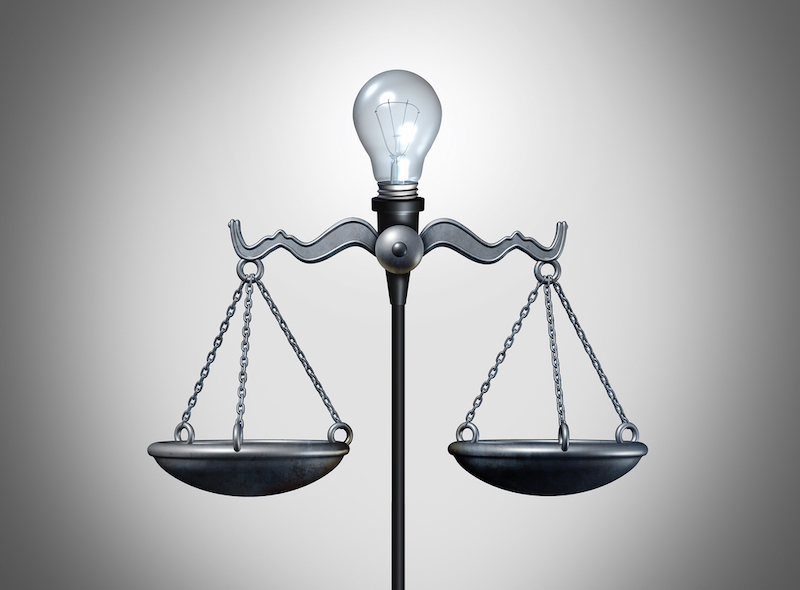Reconsidering the Right of Publicity in the World of Generative AI
“As GenAI continues to evolve, there is a growing consensus that the framework for publicity rights must be updated to address the unique challenges this technology brings.”
Bette Midler. Vanna White. Marylin Monroe. Each of these women has undoubtedly shaped pop culture in some meaningful way. Perhaps what is lesser known is that litigation surrounding each of these women has shaped the legal world’s understanding of an individual’s right of publicity.
Many states still do not formally recognize a right to publicity, while other states that do recognize such a right are not uniform. Some of these states recognize the right by statute, others by common law. Some states allow for posthumous rights to publicity, while others terminate the right at death. And some states only accord rights of protection to certain characteristics (e.g., name and image), while other states extend rights of protection to other identifiers, such as one’s voice.
The courts may be called into action yet again to address the scope of an individual’s privacy rights, this time through actress Scarlett Johansson. What makes the examination into use of Scarlett Johansson’s likeness particularly unique is that it involves generative artificial intelligence (GenAI).
1. Controversy: Is That “Sky” or “Samantha”?
More than a decade after the release of the critically acclaimed film Her, OpenAI debuted an AI assistant tool named “Sky,” whose voice sounds eerily similar to the AI-enabled operating system in Her, named Samantha. Only this time, Scarlett Johansson did not agree to voice “Sky,” as she did for Samantha.
Inspired by Johansson’s voice-acting performance in Her, OpenAI initially contacted Johansson to consider devoting her distinctive voice to “Sky” (source: The Guardian). Despite numerous requests to reconsider, Johansson declined the offer for personal reasons. To her dismay, the release of ChatGPT’s latest version featured a voice strikingly similar to hers. GPT-4o, the latest iteration of OpenAI’s hyper-successful large language model, transforms the chatbot of ChatGPT into a voice assistant that answers questions, interprets facial expressions, detects emotion, and even sings on command (source: NPR).
After receiving a number of letters from Johansson’s legal team regarding the impropriety of the “Sky” voice, OpenAI issued a press release, stating that it never intended for the voice of Sky to resemble Johansson’s voice. This apology, however, has not at all quelled the controversy. Many are calling for greater legal safeguards to protect against this potential abuse of a person’s character or image. But, most importantly, this fiasco has raised questions about the right of publicity in the digital age.
2. The Right of Publicity
With so much talk about Johansson’s right to use her image and voice, few have taken the time to peel back the law of the land to assess what rights are afforded to persons and the commercialization of their identity. The right is generally referred to as the “right of publicity.”
The right of publicity derives from state-based tort theories pertaining to the invasion of an individual’s right to privacy. The right of publicity empowers individuals to control the commercial use of their identity, safeguarding against unauthorized exploitation. At its core, this right acknowledges the economic value that individuals bring to products and endorsements. Imagine a famous athlete promoting a sports drink, a renowned chef endorsing a cookbook, or a well-known model becoming the face of a skincare brand. These endorsements can significantly boost the market value of the goods. An individual’s identity is valuable, and the right of publicity captures this asset, providing an individual with the legal authority to control and benefit from its commercial use.
Although there are currently no federal publicity rights, these protections are recognized and enforced through a patchwork of state laws. More than 30 states offer some form of protection, whether through statute, judge-made law, or both. Naturally, the legal landscape is diverse and often conflicting.
While it varies by jurisdiction, a publicity claim generally involves two key components. First, the plaintiff must have a valid right of publicity. A plaintiff must ensure that the state they are domiciled in recognizes this right. In addition, the plaintiff must qualify for the right. Some cases appear to limit the right to celebrities; however, the majority view extends the right to all individuals regardless of fame. Most jurisdictions recognize postmortem rights, and they are typically limited to a fixed period after the individual’s death.
The second component of a claim is that the defendant infringed upon the plaintiff’s right. The specific test applied by courts varies, but generally, the plaintiff must demonstrate the following elements. First, the defendant used a protected aspect of the plaintiff’s identity. The attributes covered by the right generally include an individual’s name, image, and likeness, but several jurisdictions have expanded it to include voice and signature. Second, the defendant must not have obtained permission for the use. Some jurisdictions require the subject’s written consent before the use occurs, while in others consent may be inferred from words or conduct.
The third element is that the defendant’s unauthorized use is likely to injure the plaintiff. Injury may be commercial damage – the economic harm to the business value of the plaintiff’s identity. One example is the missed opportunity for the plaintiff to profit from the defendant’s use. In some jurisdictions, the injury may be mental distress. At common law, a fourth factor is typically required: that the use is for the defendant’s commercial advantage. A simple example is when a defendant uses a plaintiff’s persona to advertise the defendant’s product.
In short, protection of a person’s likeness in the United States is, at best, piecemeal. So much of it depends on whether a state even recognizes a right of publicity, and still, whether the state extends the right of publicity to certain attributes of a person (e.g., voice or image).
3. GenAI: With Great Innovation Comes Great Challenges
AI is often characterized as the simulation of human intelligence by machines, and these systems operate through algorithms and models that process data to recognize patterns and perform complex functions. From the facial recognition technologies used to unlock your phone to the friend suggestions you receive on social media platforms, you likely encounter AI on a daily basis. GenAI is a subset of AI that specializes in generating content. Unlike traditional AI, which focuses on analyzing and interpreting existing data, GenAI can create original works such as text, images, music, and even videos. This capability is powered by advanced networks, particularly deep learning models like GPT-4, which can produce human-like responses based on the patterns learned from extensive datasets.
However, with great innovation comes great challenges. The capabilities of GenAI to replicate and innovate human expressions present unprecedented dilemmas in the realm of publicity rights. Imagine that AI, trained on the voice of a renowned singer, releases a song that is indistinguishable from the singer’s work – created without their permission, involvement, or even knowledge. Such scenarios are not mere speculations but realities in today’s digital age.
For instance, the world witnessed the power of GenAI when it produced a viral song that flawlessly emulated the voices and styles of artists Drake and The Weeknd. Equally as striking, the project titled “George Carlin: I’m Glad I’m Dead” showcased an hour-long performance generated by AI, capturing the late comedian George Carlin’s unique voice and humor (source: Bloomberg Law). The creation of a deepfake video featuring Facebook’s Mark Zuckerberg, where he boasted about exploiting user data, highlighted the potential for misuse and deception enabled by this technology (source: The Washington Post). These advancements force us to rethink the boundaries of the right of publicity.
4. Where Do We Go from Here? Adapting to AI
As GenAI continues to evolve, there is a growing consensus that the framework for publicity rights must be updated to address the unique challenges this technology brings. Many, including Johansson, have called for “resolution in the form of transparency and the passage of appropriate legislation to help ensure that individual rights are protected.”
Leading the charge, the state of Tennessee took an innovative step this year, becoming one of the first states to enact a statutory regime specifically designed to tackle the challenges arising out of GenAI. The Ensuring Likeness, Voice, and Image Security Act – or the ELVIS Act, for short – amends Tennessee’s existing right of publicity laws to prohibit the unauthorized use of AI to mimic an artist’s voice. Despite Tennessee’s move forward, the landscape across the United States remains fragmented. The lack of consistency between states has prompted legal scholars to call for federal legislation that would establish a clear and uniform standard for safeguarding personal attributes from unauthorized AI use.
Fortunately, there has been significant movement at the federal level. Florida Representative Maria Elvira Salazar introduced the “No AI FRAUD Act” (No Artificial Intelligence Fake Replicas and Unauthorized Duplications Act), to the House of Representatives. This proposed legislation aims to provide robust federal protection for individuals’ likenesses and voices, particularly against unauthorized AI-generated replicas. Likewise, the bipartisan “NO FAKES Act” (The Nurture Originals, Foster Art, and Keep Entertainment Safe Act of 2023) was recently introduced in the Senate. This bill seeks to prevent the unauthorized production of digital replicas of individuals.
For now, each of these bills remains in infancy, having either been merely introduced to one body of Congress or subject to discussion at the committee level. The hope, however, is that these bills will pick up momentum to match the surge of GenAI technologies.
5. Consistency is Key
Legislative efforts at the state and federal levels reflect a broader recognition of the need to adapt our legal frameworks to the realities of the digital age. As AI technology continues to advance, ensuring that individuals’ rights to their own likenesses and voices are protected is more important than ever. By establishing clear and consistent standards, lawmakers can safeguard personal attributes from exploitation and maintain the integrity of creative expression in the face of rapid technological change.
Rebecca Villanueva, a summer associate at Baker Donelson, contributed to this article.
Image Source: Deposit Photos
Author: iqoncept
Image ID: 667202546





